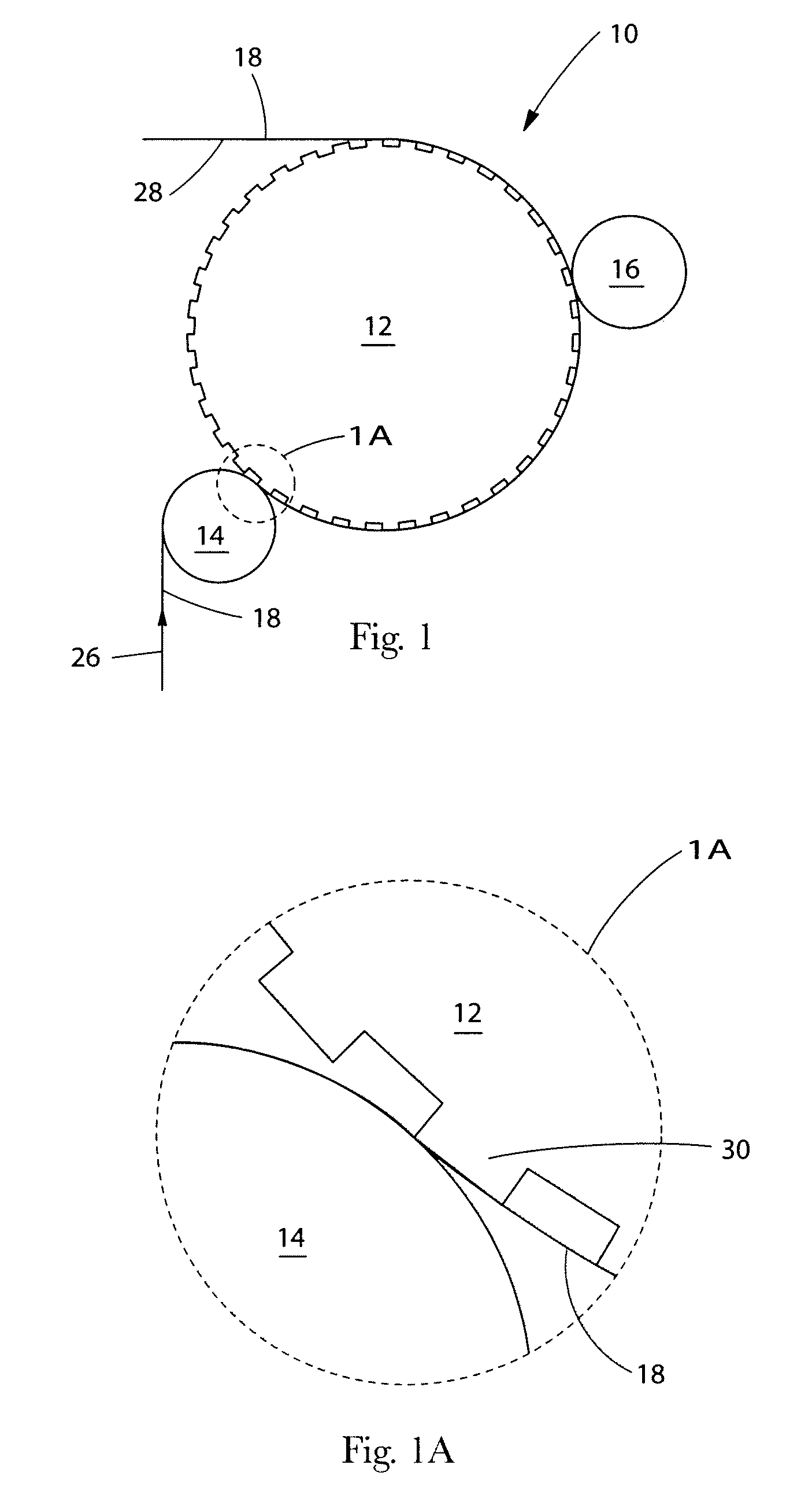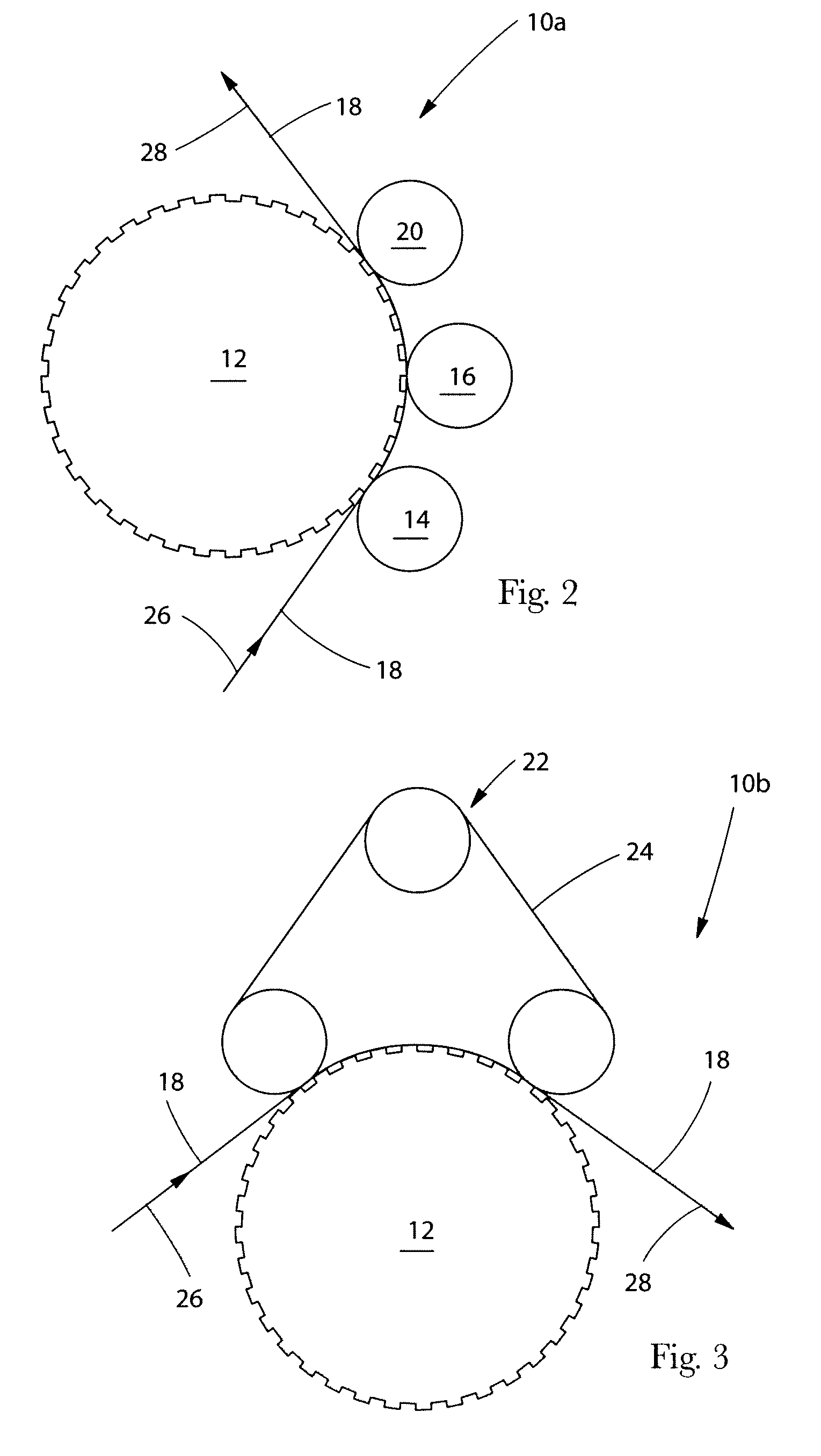Extended nip embossing process
a technology of nip and embossing process, which is applied in the direction of mechanical work/deformation, etc., can solve the problems of desirably increasing the caliper of the ply, and reducing the tensile strength of the ply,
- Summary
- Abstract
- Description
- Claims
- Application Information
AI Technical Summary
Benefits of technology
Problems solved by technology
Method used
Image
Examples
example 1
A. Example 1
[0142]One fibrous structure useful in achieving the embossed multi-ply paper product of the present invention is the through-air-dried (TAD), differential density structure described in U.S. Pat. No. 4,528,239. Such a product may be formed by the following process.
[0143]A Fourdrinier, through-air-dried papermaking machine is used. A slurry of papermaking fibers is pumped to the headbox at a consistency of about 0.15%. The slurry consists of about 70% Northern Softwood Kraft fibers, about 30% unrefined Eucalyptus fibers, a cationic polyamine-epichlorohydrin wet burst strength resin at a concentration of about 25 lbs per ton of dry fiber, and carboxymethyl cellulose at a concentration of about 5 lbs per ton of dry fiber, as well as DTDMAMS at a concentration of about 6 lbs per ton of dry fiber.
[0144]Dewatering occurs through the Fourdrinier wire and is assisted by vacuum boxes. The embryonic wet web is transferred from the Fourdrinier wire at a fiber consistency of about 2...
example 2
B. Example 2
[0149]A product produced as detailed in Example #1 supra is ply bonded to a second product produced as detailed in Example #1 supra. The resulting 2-ply substrate is processed as detailed infra.
[0150]The paper web described above is then subjected to a knob-to-rubber impression embossing apparatus and process as follows: A 14 inch diameter embossing roll is engraved with a nonrandom pattern of embossing protrusions. The embossing protrusions have a wall angle of 102.5°, round or oval surface with a major / minor axis of 0.1″, and a height of 0.130″. There are 18 embossing protrusions per square inch.
[0151]The paper web passes a 0.63″ nip formed between the embossing roll and a first pressure roll having a hardness of about 17 P&J and a diameter of about 7 inches that is juxtaposed in an axially parallel arrangement with the embossing roll. After undergoing an initial embossing transformation, the paper web passes a second 1.5″ nip formed between the embossing roll and pres...
PUM
| Property | Measurement | Unit |
|---|---|---|
| Adhesivity | aaaaa | aaaaa |
| Depth | aaaaa | aaaaa |
Abstract
Description
Claims
Application Information
 Login to View More
Login to View More - R&D
- Intellectual Property
- Life Sciences
- Materials
- Tech Scout
- Unparalleled Data Quality
- Higher Quality Content
- 60% Fewer Hallucinations
Browse by: Latest US Patents, China's latest patents, Technical Efficacy Thesaurus, Application Domain, Technology Topic, Popular Technical Reports.
© 2025 PatSnap. All rights reserved.Legal|Privacy policy|Modern Slavery Act Transparency Statement|Sitemap|About US| Contact US: help@patsnap.com



